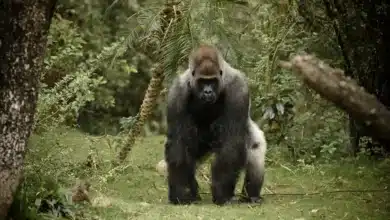The World’s Smartest Dogs And Their Talents
Dogs are intelligent animals. Dogs are extremely intelligent animals. They can understand a wide range of human words and commands. They are ideal companions because they can adapt to routines and develop strong bonds with their owners. Not all dogs are equal in terms of intelligence.
Some breeds are consistently ranked higher in intelligence due to their quick problem-solving skills, fast learning, and responsiveness. Let’s explore the world’s smartest dogs and their talents from mastering complex tasks to excelling in obedience, agility, and even emotional support work. These dogs are known for their intelligence, loyalty and close relationship with humans.
Defining Canine Intelligence
It’s more than a dog that can learn quickly. A smart dog excels at problem-solving and memory. Canine intelligence can be measured scientifically by cognitive skills like adaptability, ability to learn quickly and how a dog applies this knowledge in real-life situations. To assess these traits, researchers use standard intelligence tests, which measure how dogs react to different tasks and challenges that are designed to gauge mental performance.

Intelligence is not a one-size-fits-all thing. Some breeds excel at obedience and agility, while others display their intelligence in subtler ways, such as emotional sensitivity, problem-solving creativity, or independence. Every dog has their unique intelligence, whether it is a pup that can learn tricks in a matter of minutes or one that knows how to cheer you up.
10 of the Smartest Dog Breeds in the World
Are you curious about the breeds that are considered to be the most intelligent? This article highlights 10 of the most intelligent dog breeds in the world. Each is known for its sharp mind, loyalty, agility and deep devotion to owners. This list was compiled based on research and studies that evaluated canine intelligence by evaluating obedience, memory and task performance.
1. Papillon
The Papillon, dubbed the smartest toy dog breed of all, is more than a lapdog. They are very active and obedient despite their small size. They excel at agility and obedience contests. Originally bred to be rats, Marie Antoinette was said to own one. The shape of the ears gives them their name, Papillon in French.
2. Border Collie
The Border Collie, widely regarded as one of the smartest dog breeds in the world, is energetic, agile and focused. They were originally bred to herd sheep and need constant mental activity. They can be destructive if they are not stimulated enough. They are ideal for obedience, herding, flying disc, and other sports that require athleticism and intelligence.
3. Bloodhound
For centuries, the Bloodhound has been used in rescue and search missions because of its powerful tracking ability and nose. Bloodhounds, though gentle and loyal by nature, are independent and need plenty of space. They’ve even been known to track a scent over 100 miles.
4. Doberman Pinscher
Dobermans have a sharp mind, are loyal and responsive. They are excellent in obedience, military service, and police work. Dobermans are curious and energetic dogs that thrive on regular exercise and training. They are intelligent and loyal, making them an excellent match for active owners.

5. German Shepherd
German Shepherds are highly intelligent and versatile. They were originally bred to protect and herd livestock. They are ideal for law enforcement, military and search and rescue roles because of their problem-solving skills and work ethic. They are loyal, trainable and courageous. When properly socialised, they can also be gentle and devoted pets.
6. Australian Shepherd
The Australian Shepherd is energetic, intelligent and loyal. It was developed in America West to herd livestock. Aussies are excellent in obedience, agility and service work. They are loyal to their owners, and require plenty of training, exercise and socialisation.
7. Labrador
The Labrador is friendly, eager to please and quick to learn. They were originally bred for retrieving game but excel at obedience, service and therapy. They are ideal for families, particularly first-time owners, because of their playful and affectionate nature.
8. English Springer Spaniel
English Springer Spaniels have a great deal of intelligence and are always curious. They are very intelligent and enjoy learning new tricks. They need to be supervised outdoors due to their prey drive. When properly trained, they can be loving and energetic pets.

9. Golden Retriever
Golden Retrievers have a gentle temperament, are trainable and intelligent. They are known for their eagerness to please and friendly disposition. They excel at obedience, hunting and therapy work. They are popular because of their adaptability and affectionate nature.
10. Rottweiler
Rottweilers have a powerful and loyal nature, as well as a high level of intelligence. They can be excellent family pets, service dogs, or guard dogs with early socialisation and proper training. Puzzle toys and playtime are important to keep their minds stimulated.
Dogs Intelligence
Dogs are much more intelligent than we often give them credit for. The way dogs interact with humans is one of the most compelling pieces of evidence. Humans, as the dominant species of the planet, have long shaped our environment. Dogs, on the other hand, have adapted well. In choosing to align themselves with humans, they made an intelligent choice: become friends with the world’s top predators and prosper alongside them. This is not only loyal, it’s also smart.
Some of the most intelligent breeds of dogs can read human emotions and signals. Some studies have shown that dogs are able to read body language better than humans. Over thousands of generations, dogs that were attuned and responsive to human moods, routines and commands would have been selected for selective breeding.
Some breeds like Border Collies or Australian Cattle Dogs were bred not only to bond with people, but also to perform complex tasks such as herding and guarding. They can even be trained to search and rescue. Dogs are used as pets, therapy dogs, and working animals. It is impossible to deny their intelligence, and humans have played an important role in developing it over generations

Common Characteristics of Highly Intelligent Dogs
All dogs are capable of learning by nature, but some breeds are known for their intelligence. The majority of dogs are able to understand 150 words or cues. However, highly intelligent breeds can go above and beyond, learning complex commands quickly, solving problems and anticipating the needs of their owners. These dogs are highly intelligent and require more attention than other breeds.
In general, intelligent dog breeds share several key traits:
-
Trainability – They learn new commands and behaviours more quickly than other breeds, and often require less repetition.
-
Focus – These dogs are more likely to concentrate and be less easily distracted.
-
Vocalisation – Dog breeds that were originally developed to guard or herd sheep use their voice to communicate with their owners.
-
High-energy – Intelligent dogs tend to be active, enthusiastic and eager to learn.
-
Loyal and Affectionate – They are often motivated to please and have a strong bond to their human companions. This makes them receptive to training.
They are not only smart, but they also have the right characteristics to be successful in their roles at work, home, and with their family.
Why Smart Dogs Aren’t Always Easy?
It can be rewarding to own a dog that is highly intelligent, such as a Border Collie or German Shepherd. But it can also be a challenge. These dogs are quick to learn and can often pick up new commands after just a few attempts. Their sharp minds mean that they also need constant mental stimulation. Boredom can quickly set in, leading to destructive behaviours such as chewing, digging or excessive barking. To keep these dogs well-behaved and happy, they need daily interaction and consistent training.
Owners should prepare to give their dogs plenty of mental stimulation and physical exercise, typically an hour or two per day. To challenge their mind, puzzle toys, agility training, obedience courses, and interactive games such as hide-and-seek or scent tracking are all excellent options. Early socialisation is important for preventing anxiety, reactivity or dominating behaviour. They thrive with structure and purpose, and become loyal and focused companions when they are given both.
Conclusion
With the right training, all dogs can learn basic commands such as “sit” and “stay”. Understanding your dog’s motivations and instincts is key. Whether they were bred for herding, guarding, or retrieving, you can use these to guide your training. The smartest breed may not be the right fit for your household. It’s important to choose a dog who fits your lifestyle, and then commit to loving, discipline, and patience in order for them to show their best.




